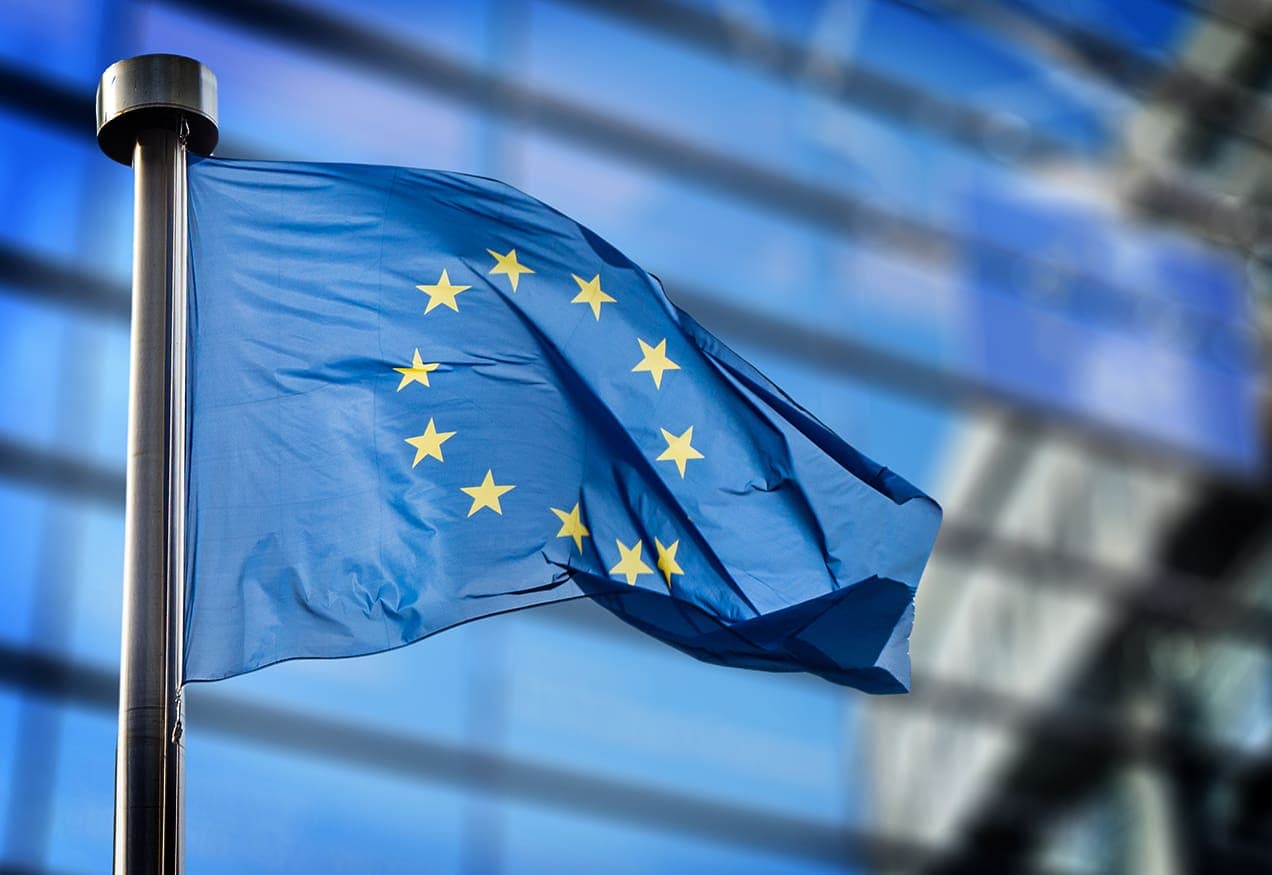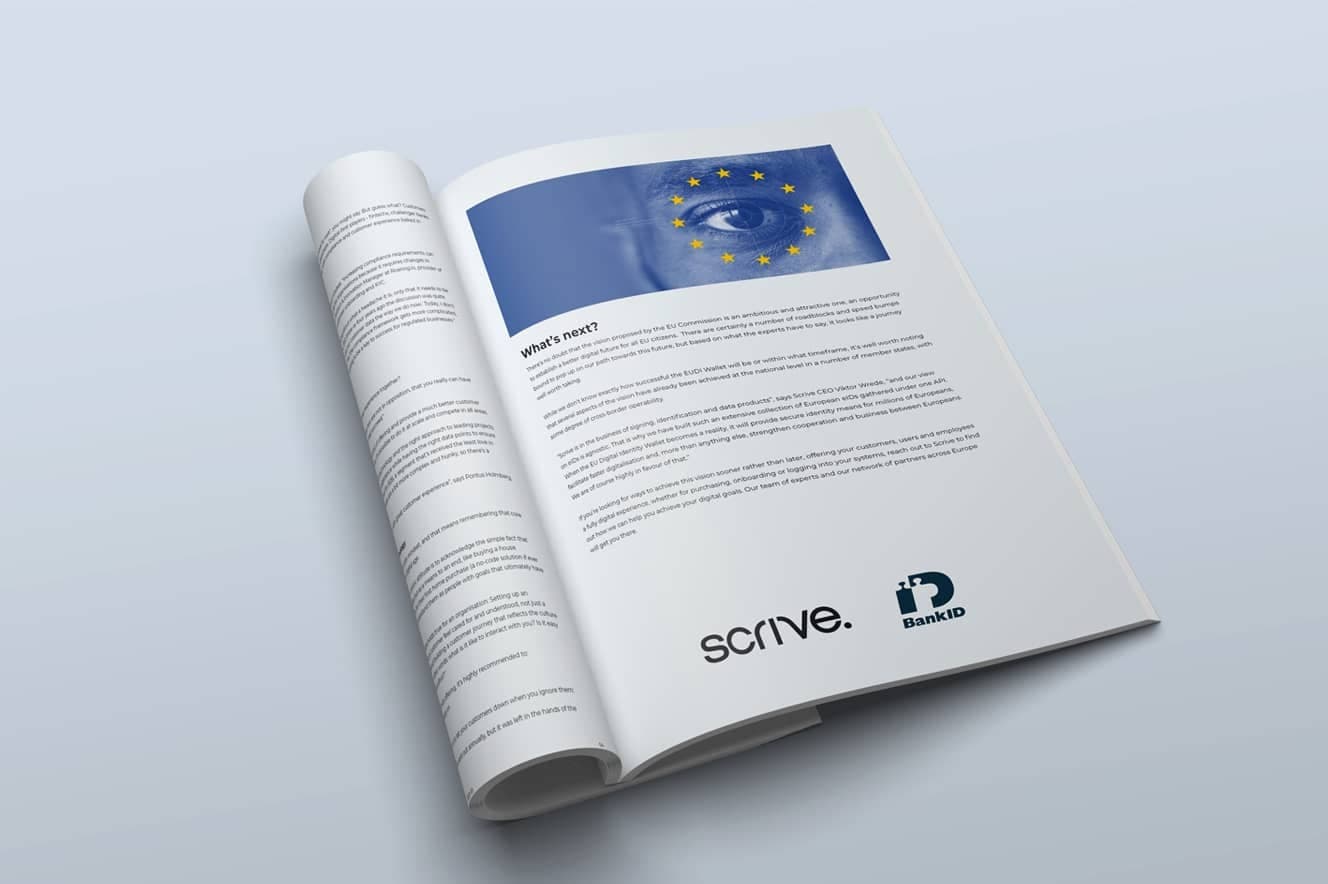EUDI Wallet: a single identification method
The European Union Digital Identity (EUDI) Wallet project aims to simplify cross-border compatibility for European digital identities. You have the option to either download the eBook or read the entire guide below.

“Every time an app or website asks us to create a new digital identity or to easily log on via a big platform, we have no idea what happens to our data in reality. That is why the Commission will propose a secure European e-identity. One that we trust and that any citizen can use anywhere in Europe to do anything from paying your taxes to renting a bicycle. A technology where we can control ourselves what data is used and how.”

The European Union Digital Identity (EUDI) Wallet
is a key part of the European Commission’s plan to make this “Europe’s digital decade”. The idea behind the EUDI Wallet is to give EU citizens one safe digital ID for travel, work, using public services, paying, signing documents, and more. The foundation of this vision was set out in 2016 with the eIDAS Regulation, and now there is a big push on the part of both businesses and public sector organisations to make it a reality. In March 2024, eIDAS 2.0 was approved which is seen as the next big step towards the EUDI project becoming a reality. Read more about this here.
Mattias Rohmée, Strategy & Business Development for Sweden’s BankID, speaks about the opportunities:
“The harmonisation and wide availability of digital IDs across the EU has the potential to:
- level the technical playing field for citizens and make services available for all,
- substantially expand the scope of cross-border digital services (beyond identification and payments), and
- enable countries lacking existing digital ID implementations, or having less adopted/successful ones, to leapfrog.”
Signing legally-binding agreements electronically is just one area of daily life where the EUDI Wallet will have a positive impact.
“We view the EUDI Wallet as a positive for businesses and customers, service providers and citizens. It’s about improving efficiency, lowering costs and enabling digital journeys to be completed more smoothly and conveniently. Naturally there are challenges to working on the scale of the entire EU.”

“If an agreement is challenged in court, one of the essential questions is ‘Who signed the document?’. Because the EUDI Wallet will provide a means of secure identification for many more millions of Europeans, secure e-signing will therefore become a reality for many more.”


The state of digital identity in the EU
One way of viewing the EUDI Wallet is as a way to bring consolidation to an increasingly fragmented landscape regarding online identity proofing. For the last twenty years, in-person ID checks using a physical document like a passport or national identity card have been increasingly replaced by digital solutions, often referred to as eID (electronic identification). Digital identity services have been developed and offered by national governments, private interests (notably banks and telecoms) and public-private joint ventures.
These various services have employed a variety of technologies, including card readers, mobile apps, SIM-based solutions, NFC, One Time Passwords (OTP), PIN by SMS, in-person video conferencing and even AI (to verify the authenticity of uploaded photos of identity documents).

Challenges and variances in digital identity adoption
According to the European Commission, “only about 60% of the EU population in 14 Member States are able to use their national eID cross-border” and “only 14% of key public service providers across all Member States allow cross border authentication with an e-identity system”, so there’s a lot of work to be done in order to reach the vision of a pan-European solution.
The level of security of the many services currently offered can vary greatly and therefore so does their acceptance, which can depend on national and EU laws as well as the level of risk involved in a given transaction. The acceptance and adoption of digital identity methods is also dependent on cultural factors, like levels of social trust. In the Nordics, for example, nationally-recognised electronic identity (eID) methods have been a part of daily life for over 20 years: to log in to banking sites, access public services, make online purchases, sign documents, buy train tickets and so much more. In other countries the concept is relatively new, and digital identity methods that do exist may be limited to accessing public services like tax authorities.
Initial steps
The European Commission is working towards a standardised agreement between all EU member states to recognise digital identity across borders. At the same time, a major revision of the eIDAS Regulation is underway, commonly referred to as eIDAS 2.0. To guide the technical development of the EUDI Wallet project, in 2021 the Commission adopted a Recommendation calling on member states to work towards the development of a toolbox including a technical Architecture and Reference Framework (ARF).
The ARF is a set of common standards and technical specifications, including guidelines and best practices. The ARF will, in turn, serve as a basis for the implementation of the eventual legislation that will support the EUDI Wallet: the European Digital Identity Framework Regulation. Privacy and security are two major factors determining how the EUDI Wallet will function. For example, a citizen needs to be able to determine and control what kinds of personal data they choose to share with a given service provider. Consider the different types of personal information that might be involved in the many potential use cases, such as tax declarations, voting, healthcare, education, online commerce and signing documents. In creating the technical and security framework for the EUDI Wallet, there is of course plenty of experience to draw upon, based on the various eID methods that have been developed and used at the national level over the past twenty years.
Progress and challenges
It’s probably realistic to view the EUDI Wallet as a project rather than a product we can all start using on the day it rolls out. One misconception we hear a lot, according to BankID’s Mattias Rohmée, is “that the outcome is binary, meaning that it will be either a success or a failure.” “The mindset has already shifted throughout the entire landscape for actors and consumers”, Rohmée continues. “Enough pieces of the puzzle have been set into motion, and the EUDI Wallet LSP (Large-Scale Pilots) projects will facilitate experiments and provide lessons learned for the participants and observers. All these factors will move us towards achieving cross-border interoperability, and as a result, the future outcome seems fairly set; a solution will come. However, the jury is still out as to whether all this will take place within the context of eIDAS 2.0 or not. “With that said, we’re very excited to be part of two Large-Scale Pilots for the EUDI Wallet and to provide experience and expertise from 20 years of delivering secure eID services and tens of billions of transactions.”Please refer to the following press release for more information related to the involvement in these Large-Scale Pilots.”
User adoption
It might be easy for people in countries with high eID adoption rates to take for granted the difficulty of achieving an EU-wide solution. Technical complexity is just one hurdle. Getting the general public’s buy-in to participate and trust the EUDI Wallet is another matter.
We’ve already seen countries struggle with the adoption of different types of national identification solutions, so we have to be prepared for each country having its own issues to overcome. Trust and user demand will have a big bearing on the project’s success. Then there’s the potential reticence of member states regarding the required investment of time and resources.
“The EUDI Wallet will need to be as easy to use as ‘login with Apple, Facebook or Google’. Card readers, code cards, and other security features that are perceived as cumbersome by users will hinder adoption, and thereby the success of this project. Swedish BankID and Danish MitID are great examples to take inspiration from.”

Commercial viability
“Who’s going to pay for it?” is one of the most common questions when we look at projects that don’t have a clear path to financial profitability, and this is where we see a risk of friction and delays for the EUDI Wallet. The ARF specifies a number of different provider roles, but the business model is yet to be clarified to a degree where we can fully bank on it.
Legal complexity
The past decade has seen a lot of evolution in the regulatory landscape of the EU, including GDPR, eIDAS and the Anti Money Laundering Directive (AMLD). The EUDI Wallet’s success depends on compliance not only with existing EU and local legislation but with any further amendments that might be made during the time the wallet is being built. This may not be a roadblock as much as a speed bump, but it could nonetheless affect both the shape of the solution and the timeframe within which it will be implemented.

What’s next?
There’s no doubt that the vision proposed by the EU Commission is an ambitious and attractive one, an opportunity to establish a better digital future for all EU citizens. There are certainly a number of roadblocks and speed bumps bound to pop up on our path towards this future, but based on what the experts have to say, it looks like a journey well worth taking. While we don’t know exactly how successful the EUDI Wallet will be or within what timeframe, it’s well worth noting that several aspects of the vision have already been achieved at the national level in a number of member states, with some degree of cross-border operability.
“Scrive is in the business of signing, identification and data products and our view on eIDs is agnostic. That is why we have built such an extensive collection of European eIDs gathered under one API. When the EU Digital Identity Wallet becomes a reality, it will provide secure identity means for millions of Europeans, facilitate faster digitalisation and, more than anything else, strengthen cooperation and business between Europeans. We are of course highly in favour of that.” says Scrive Chief Strategy Officer Viktor Wrede.
If you’re looking for ways to achieve this vision sooner rather than later, offering your customers, users and employees a fully digital experience, whether for purchasing, onboarding or logging into your systems, reach out to Scrive to find out how we can help you achieve your digital goals. Our team of experts and our network of partners across Europe will get you there.
Download the eBook
You can download this article in eBook format. Created in partnership with BankID, the eBook delves into the benefits the EU Digital Identity offers to both businesses and the wider public in Europe. Explore the opportunities it presents and the potential challenges it may face on its path to realisation.